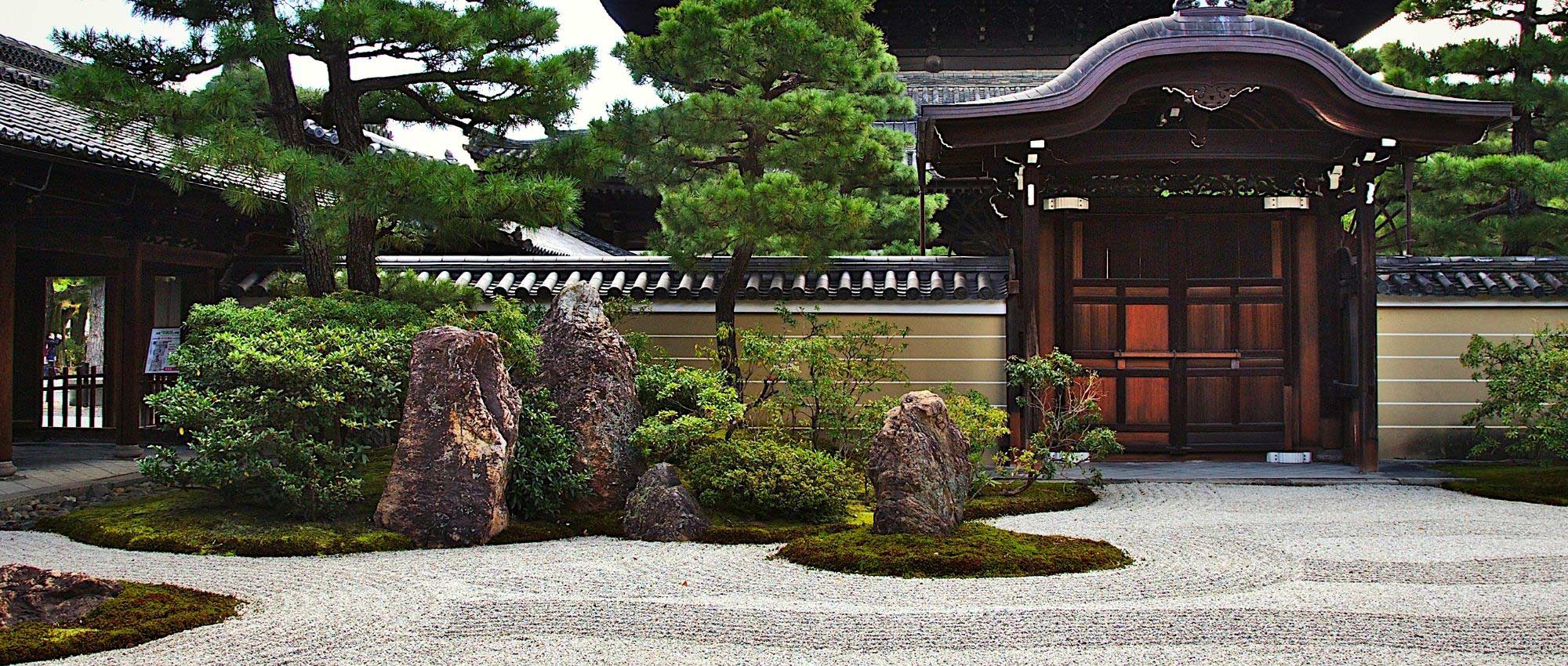
Japanese garden: 10 iconic shrubs
Our selection for a zen garden!
Summary
Designing a Japanese garden will allow you to enjoy a calming space that invites meditation and contemplation. Japanese gardens are inspired by nature and create a pleasing balance of shapes and colours. Natural elements are important: water, stone, wind and relief are highlighted. They also contain symbolic or decorative objects, such as gateways, lanterns, statues, fountains… It is also a garden that celebrates seasonal change: spring is marked by flowering of cherry trees, autumn by glowing foliage (Japanese maples, Prunus…). Japanese gardens also play with shapes and textures, as well as shades of green, with tapetum plants and bushes pruned into cloud shapes. In this guide we present the 10 most beautiful bushes to include in a Japanese garden, and some tips to ensure successful cultivation!
For more ideas on composing a Japanese garden, feel free to consult our advice sheets “Create a Japanese or Zen garden”, “7 plant combinations for Japanese gardens” and “Japanese garden: 10 emblematic perennial plants”
Flowering cherry
Japanese cherry trees, or flowering cherries, offer from early spring abundant soft pink flowering, sometimes white. Their flowers usually appear before the leaves, and are single or double, depending on the varieties. Their flowering is very poetic and delicate, with soft hues. Flowering cherries clearly mark changes of season, including autumn, as their foliage then takes on beautiful red or orange colours before falling. Their bark is also very decorative, with horizontal striate markings. More compact varieties adapt well to being grown in pots. Flowering cherries are very symbolic bushes, evoking the ephemeral character of beauty and life. They are called Sakura in Japan, and give rise in spring to a ritual called Hanami, when Japanese people gather beneath cherry trees for picnics. Most commonly cultivated are Prunus serrulata, but other species also exist.
Discover our fact sheet: Japanese cherry trees: Planting, pruning and caring for and our advice sheet: Flowering cherry, best varieties

Prunus serrulata
You may also read
7 plant combinations for Japanese gardensJapanese maple
Japanese maple is a very striking bush that offers beautiful palmate foliage, very finely cut. These are mainly Acer palmatum, Acer japonicum and Acer shirasawanum. There are countless varieties, available in a wide palette of colours. Japanese maple is deciduous and takes on very beautiful autumn colours. It grows fairly slowly and forms a perfect, very harmonious silhouette, and deserves to be planted as a specimen. In the garden, to ensure it thrives fully, plant it in partial shade, in fresh, free-draining, porous, slightly acidic soil, in a sheltered, wind-protected spot. Maintenance is limited to watering during dry periods and occasionally adding compost at its base to enrich soil. It can easily manage without pruning. However, it is susceptible to verticillium wilt. Japanese maple adapts easily to small gardens and to planting in containers. It’s a perfect bush for urban gardens. It pairs wonderfully with ferns, as well as with bushes for heather soil: azaleas, Daphne, Pieris japonica, etc.
Discover our factsheet :Japanese maple: Planting, growing and maintaining

Acer palmatum subsp. amoenum (photo Krzysztof Golik)
Discover other Japanese gardens
View All →Available in 1 sizes
Available in 0 sizes
Available in 0 sizes
Available in 1 sizes
Available in 0 sizes
Available in 2 sizes
Available in 1 sizes
Available in 1 sizes
Available in 1 sizes
Available in 1 sizes
Rhododendrons and Azaleas
Rhododendrons and azaleas are heather soil bushes that offer a generous spring flowering. Their flowers have bright, luminous colours: pink, red, orange, yellow, white… They do well in partial shade, in acidic, cool, well-drained and humus-bearing soil. They require little maintenance. We nevertheless recommend mulching around their base with a thick layer of pine bark. Pruning is not necessary. Preferably water them with rainwater, as hard water could cause chlorosis. Plant them in beds, singly or in pots for the most compact varieties. These bushes grow slowly.
Rhododendrons and azaleas are very similar bushes that can be easily confused. Azaleas are smaller than rhododendrons, and their flowers are more fragrant. Rhododendrons and Japanese azaleas are evergreen, whereas Chinese azaleas are deciduous.
Discover our sheet : Rhododendron: Planting, cultivation and maintenance

Japanese azalea ‘Hino Crimson’
You may also read
Create a Japanese or Zen gardenCloud-pruned pines
In Japanese gardens, cloud-pruned pines, or niwaki, are often found. This pruning consists of forming plateaus by concentrating vegetation in certain places, notably at tips of branches, and clearing architecture of trunk and main branches. This highlights architecture of pines, giving them a very airy silhouette, somewhat like bonsai. Twisted and leaning shapes are particularly emphasised. Silhouette is harmonious, and generally gives impression that bush is very old. Concerning species to favour for this type of pruning, we particularly recommend Scots pines (Pinus sylvestris), as well as Japanese black pine, Pinus thunbergii. The latter readily takes on a leaning, twisted silhouette. You can also use the Japanese white pine, Pinus parviflora.
Discover our advice sheet on cloud pruning !

Pinus parviflora (photo Harum Koh)
Camellia japonica
Japanese camellia offers delicate flowering in mid-winter, at a time of year when flowers are scarce. They flower from late winter to spring. Flowers can be pink, red, white… They can be single or double, depending on number of petals. Flowers of Camellia japonica are not scented. Leaves are dark green, glossy and evergreen. It has a compact habit and grows slowly, but over time can still reach up to 3 metres in height for the largest varieties. Plant it in shade or partial shade, in cool, light, humus-bearing, acidic soil, sheltered from cold winds. Avoid calcareous soils in all cases, which can cause chlorosis. They can be grown in a pot or container. As for maintenance, this is limited to laying a layer of mulch at the foot of the camellia in autumn, watering occasionally in case of drought, and removing faded flowers. Pruning is unnecessary.
Camellia japonica is the most widely cultivated of the camellias. There are countless varieties. It differs from Camellia sasanqua, which flower in autumn, and from wild camellias, with a loose, very natural habit.
Our factsheet : 6 Japanese camellias to have in your garden

Camellia japonica (photo Harum Koh)
Nandina domestica
Sacred bamboo, or Nandina domestica, is a charming bush with slender evergreen foliage. It is ornamental all year round. Leaves are red when young, then turn dark green, and take on orange-red or purple hues in autumn, a rare quality for an evergreen bush! It produces a delicate summer flowering of white panicles. Its decorative red berries are also much appreciated. It prefers partial shade in cool, well-draining, rather light soil. It tolerates temperatures of −12 to −15 °C, but best to choose a position sheltered from wind. It tolerates air pollution well and is ideal for city gardens! Fairly compact, it reaches between 60 cm and 2 m, depending on variety. Use in a border, as an informal hedge, in a cool shaded rockery, or in a pot!
Its changing colours through the seasons are much admired!
Discover our article Nandina domestica: a reliable choice among ornamental foliage plants.

Nandina domestica (photo Rictor Norton & David Allen)
Pieris japonica
Pieris, or Japanese andromeda, is a heather soil bush with evergreen foliage. Its young shoots have a beautiful bright red colour. Its spring flowering is appreciated, appearing as white or pink bell-shaped flowers. Pieris japonica ‘Debutante’ offers a truly impressive flowering, covering itself in spring with a profusion of white flowers! The Japanese andromeda grows fairly slowly and reaches, at ripeness, between 50 cm and 2 metres tall, depending on variety. Plant in partial shade, in heather soil that is rather acidic. It is ideal as a companion to other heather soil bushes, such as azaleas, camellias or Nandina domestica. There are dwarf varieties, such as ‘Little Heath’, which do not exceed 60 cm in height. There are also variegated varieties, such as Pieris japonica ‘Flaming Silver’, with cream-marginate leaves.
Discover our guide: Pieris japonica: Planting, pruning and maintenance

Pieris japonica ‘Mountain Fire’ (photo David J. Stang)
Cornus controversa
Cornus controversa, or pagoda dogwood, is a bush with a superb tiered habit. Its branches grow horizontally. It bears elliptical, glossy leaves and is covered in early summer with superb flat white inflorescences. To showcase it, it really deserves to be planted as a specimen! Its foliage takes on beautiful autumn colours, deep red or purplish, before falling. Plant in sun or partial shade, in moist, non-calcareous soil. Discover the splendid variety Cornus controversa ‘Variegata’, which offers foliage largely variegated with cream-white, making it particularly bright! It is a very original bush.
You can also grow Cornus kousa, another Japanese dogwood that bears superb flowers made up of large white bracts. Its foliage also takes on flamboyant autumn colours.

Cornus controversa ‘Variegata’
Ilex crenata
Crenate holly, or Ilex crenata, is an evergreen Japanese bush bearing small, glossy dark green leaves. Its foliage is particularly dense, and it tolerates pruning very well, making it a bush often used for topiary, as a replacement for box. In Japanese gardens it is pruned into cloud shapes, or niwaki. This pruning consists of emphasising trunk and main branches by removing secondary leaves and shoots that grow on them, leaving only clusters of leaves at branch ends. It nicely highlights its architecture. It will therefore be perfect for creating a zen garden. It is dioecious: there are male and female plants, and only female plants bear fruit, in the form of small black berries. It prefers partial shade and light, humus-bearing, non-calcareous soils. It also has the advantage of being very hardy. To showcase it, plant it as a specimen.
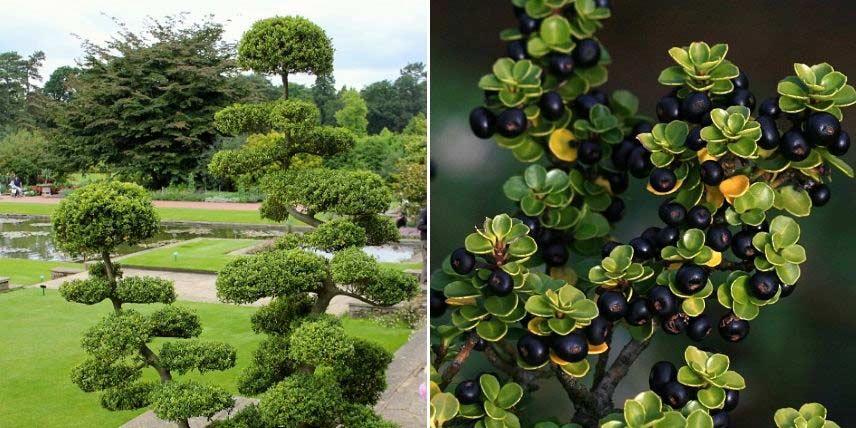
Ilex Crenata ‘Kinme’ and ‘Mariesii’ (photos Tim Sheerman-Chase and S. Rae)
Viburnum plicatum
Viburnum plicatum is a superb bush with a tiered habit, bearing horizontal branches topped in spring, in May–June, by a beautiful white flowering, in flattened corymbs. Its flowers are followed by small red berries, which become black at ripeness. Its foliage, bright green and crinkled, is also much admired. In autumn it takes on blazing hues before falling. Plant Viburnum plicatum in sun or partial shade, in fresh, humus-bearing soil that is not too calcareous. It grows slowly and at ripeness reaches 2 to 3 metres in all directions. It is fully hardy, tolerating −15 to −20 °C.

Viburnum plicatum ‘Mariesii’ (photo peganum)
- Subscribe!
- Contents
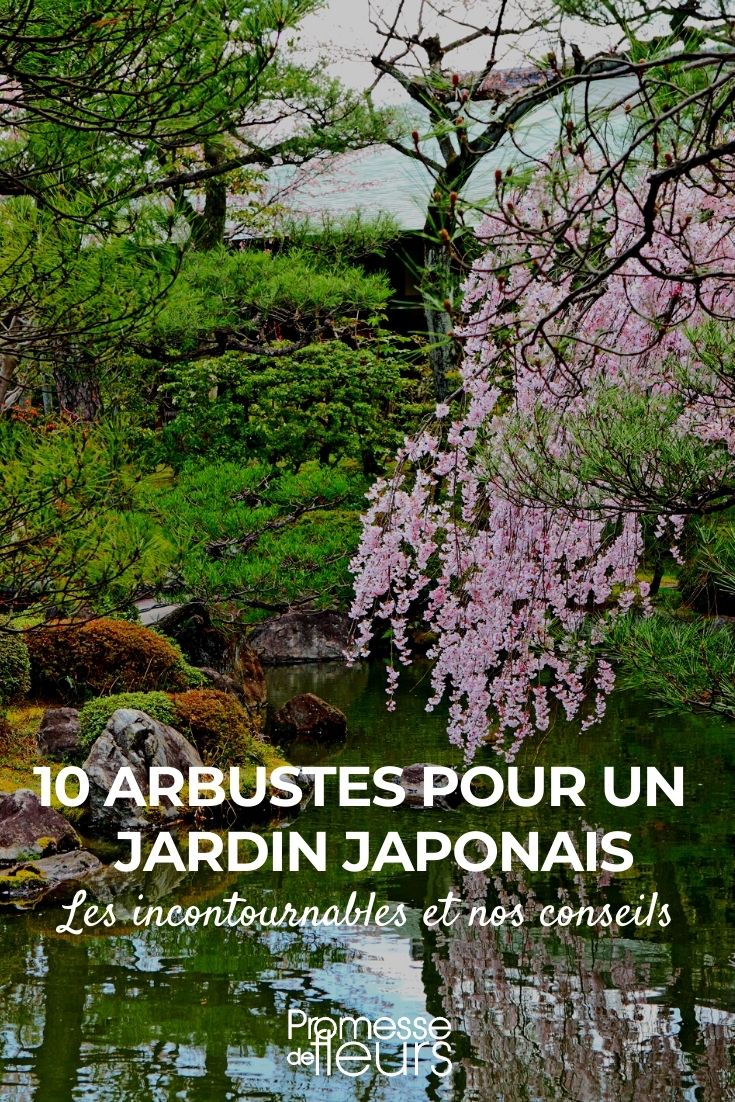































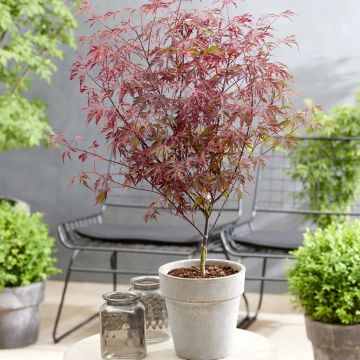
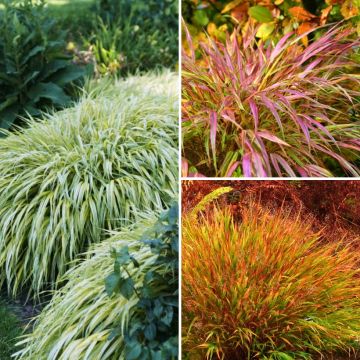
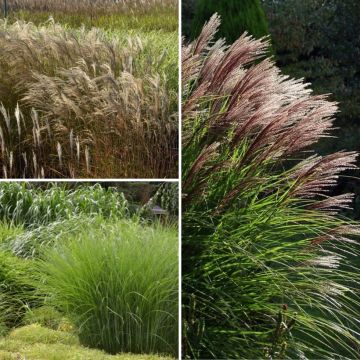
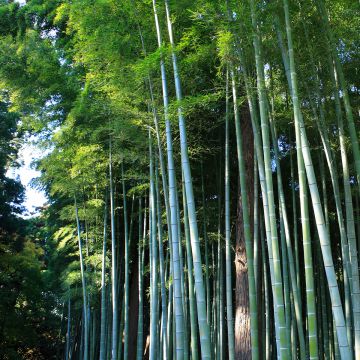
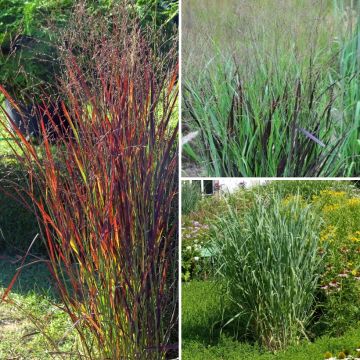
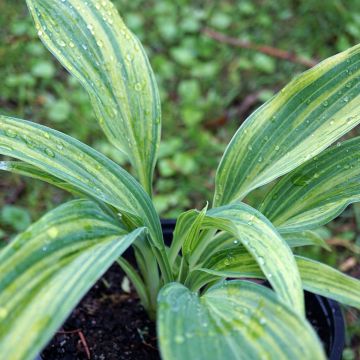

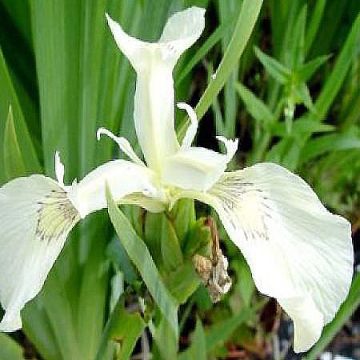
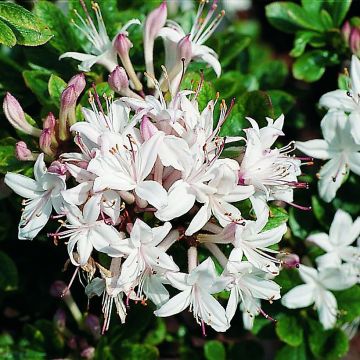
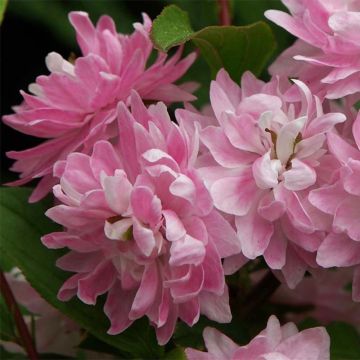
Feedbacks